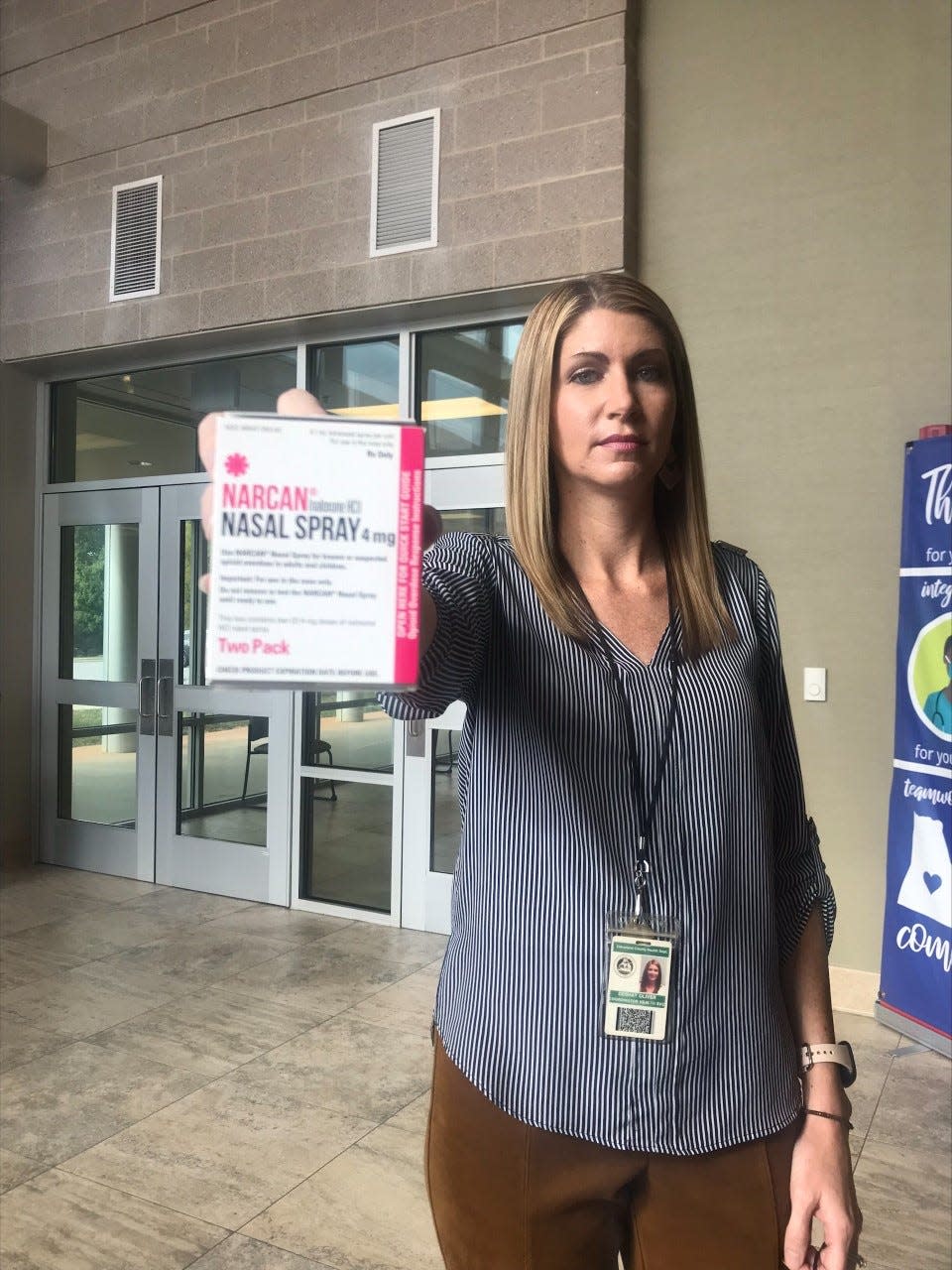Naloxone accessibility saves lives in Cleveland County

Last year, Cleveland County had 139 opioid overdose emergency room visits, according to the North Carolina Department of Health and Human Services.
In 2022, there were 114 visits.
Although the numbers showed an increase, DeShay Oliver, Cleveland County public health center deputy health director, said it doesn’t necessarily reflect an increase in overdoses in the county.
Oliver said overdose calls to Emergency Medical Services have remained consistent over the past two years.
She said according to Cleveland County Emergency Services, there were just under 400 opioid overdose calls in 2022 and in 2023.
“A possible explanation for why there were more opioid overdose emergency department visits in 2023 than in 2022 may be that fewer people refused transport to the hospital following their overdose in 2023 than in 2022.”
She said according to EMS, this may be attributed to EMS doing a better job of educating overdose patients who have been administered naloxone on the importance of still being medically evaluated by the emergency department as well as the possibility of naloxone wearing off before the opioids are eliminated from their system, causing the patient to go back into respiratory depression.
She said there is an increased risk of this happening with opioids containing fentanyl, and EMS reports a significant increase in fentanyl related overdoses from 2022 to 2023.
“On a positive note, EMS is seeing an increase in utilization of naloxone by family members and bystanders, which is critical in saving lives by reversing the effects of opiates on the brain and restoring breathing,” she said.
Oliver said in 2023, Cleveland County EMS recorded 350 naloxone administrations by EMS and bystanders for 239 people.
She said the actual number of naloxone administered is even higher.
“These numbers do not account for situations in which naloxone may be administered by a bystander and 911 is not called, nor does it account for naloxone administrations administered by first responders such as law enforcement prior to EMS arrival,” she said “It is common for it to take multiple naloxone administrations to reverse the effects of an opioid overdose, especially for fentanyl involved overdoses, and administering naloxone does not replace the need to seek medical attention following an overdose.”
Naloxone is available for free for everyone without a prescription at the Cleveland County Health Department pharmacy.
North Carolina has passed multiple overdose prevention laws that have included 911 Good Samaritan law and naloxone access components.
“The 911 Good Samaritan laws state that individuals who experience a drug overdose or persons who witness an overdose and seek help for the victim can no longer be prosecuted for possession of small amounts of drugs, paraphernalia, or underage drinking,” Oliver said. “The purpose of the law is to remove the fear of criminal repercussions for calling 911 to report an overdose, and to instead focus efforts on getting help to the victim. Also, a person who seeks medical assistance for someone experiencing a drug overdose cannot be considered in violation of a condition of parole, probation or post-release, even if that person was arrested. The victim is also protected. The caller must provide his/her name to 911 or law enforcement to qualify for the immunity.”
Oliver said the naloxone portion of the law removes civil liabilities from doctors who prescribe and bystanders who administer naloxone, or Narcan. The legislation also allows community-based organizations to dispense naloxone under the guidance of a medical provider. Pharmacists are also immune from civil or criminal liability for dispensing naloxone to people at risk of an opioid overdose.
Recently, Cleveland County received $7.2 million as a result of an opioid settlement.
Funds will be used for a community education campaign, training for healthcare providers, increasing the communities capacity to provide counseling and treatment for people with addictions and more.
This article originally appeared on The Shelby Star: Naloxone accessibility saves lives in Cleveland County

